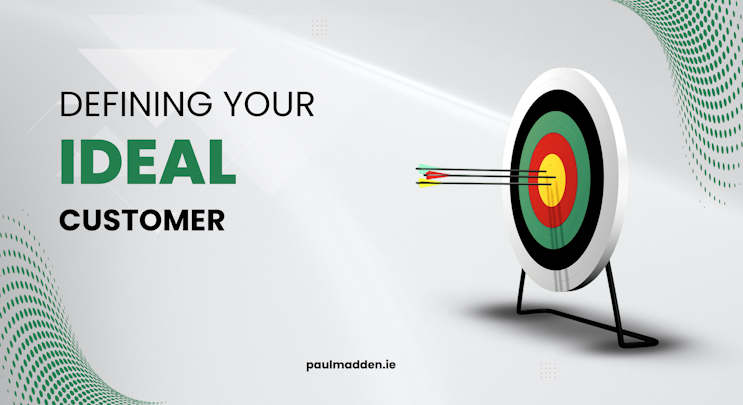
For small businesses, marketing resources ( financial and human) are often in short supply. As a result, marketing budget spend tends to be sporadic with hit & miss results.
Following recent articles on how to create nimble marketing strategies in just one hour per week, this week’s instalment focuses on why you should create marketing personas with a simple 5-step process on how to go about doing it.
A marketing persona is a fictional profile of your ideal customer, based on available real-world data. Depending on the size of your target market, personas may represent specific segments but for most small businesses, 2-3 personas are probably sufficient.
Most businesses that are limited to DIY marketing completely bypass personas and go straight to advertising on social media, Google ads etc. with varying degrees of success. But personas are essential groundwork for a more laser-focused marketing effort. They take a little bit of time up front to get right but in the long run, will save time and money by dramatically improving the effectiveness of marketing campaigns by ensuring that messages and channels are tailored to the people most likely to convert.
The good news is, even with limited resources, it’s entirely possible to create meaningful, actionable personas using data you already have and smart, low-cost tools. Follow the five steps outlined below to create marketing personas for your business.
Google Analytics will give you demographic data including age, gender, location as well as what devices people use (e.g. desktop vs. mobile) which can influence messaging formats. Platforms like Facebook, Instagram and LinkedIn provide follower and engagement data that highlight your audience’s interests and demographics. Patterns should start to emerge across data sets and your gut will tell you if they match the type of people that typically buy from your business.
Nothing beats talking to existing customers. Consider your highest value and repeat customers, knowing what influences their decision to buy from you should be applied to how you attract new customers. Platform data won’t give you the answers that conversations will — ask what problem your product/service solves; how they evaluate your solution vs. others; how likely are they to recommend your product/service to someone else.
Aim to speak to 20 existing customers as a starting point. Ideally you should also be talking to people who decided not to buy from you too — their perspective can be very telling.
Answers to these questions will inform things like customer motivation, price sensitivity, emotional factors which can influence your messaging in future marketing campaigns.
With information gathered from different data sets and conversations, it’s time to make sense of your data. Look for differences and commonalities e.g. a particular age cohort that find your business through Facebook and place a particular value on after-sales service. Another group might just want fast turnaround and have little interest/need for after sales solutions. This is very much dependent on your business context but patterns should emerge from data regardless of what industry you operate in.
Each persona should represent a group with unique needs and communications preferences e.g. some prospective customers will sign up for an email marketing list for the latest offers while others simply don’t have time for signing up to email marketing.
Based on what you have learned from website data, social media and advertising platform data and your conversations with customers and prospects, you should have enough information to create 2-3 personas. These personas can start as just a set of simple bullet points including:
Based on the above, you will create sample messages to include in promotional campaigns, social media posts, emails targeting these personas e.g. price sensitive customers might get shown ads with discount offers, whereas customers that want after-sales support will receive a different message.
Creating and using personas is always a learning process. They can even shift how you view your own product or service — you might discover, for instance, that you’re undercharging for your product or service.
Once your personas are defined, it’s time to put them to work. Tailor your ads, email marketing campaigns, and social media content to each persona, and monitor how your target segments respond. Some groups will likely engage more than others, helping you identify where to focus your energy.
This exercise lays the foundation for a stronger return on your marketing investment. Over time, your attention will naturally shift toward the mix of personas that delivers the greatest value. This might mean higher value sales, more repeat customers or both. As these personas begin driving measurable results, your sales team will start to adjust their approach as well, incorporating persona insights into how they engage prospects.
When sales and marketing are aligned around a clear understanding of who your customers are, you create a more consistent and compelling customer experience — one that makes it easier to close sales and build long-term loyalty.
Figuring your marketing strategy as you go takes time and consistent effort. It doesn’t have to break the bank if you can afford to dedicate time to it consistently week after week. If you can’t find the time to get it done and would like help in implementing a successful marketing strategy, please get in touch!
To provide the best experiences, we use cookies to store and/or access device information. Consenting to cookies will allow us to process data such as browsing behaviour or unique IDs on this site. Not consenting or withdrawing consent, may adversely affect certain features and functions.